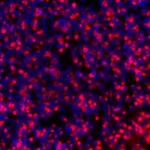
Josephine M. Egan, M.D.
Senior Investigator
Laboratory of Clinical Investigation
NIA
Clinical Director
NIA
Research Topics
Type 2 diabetes mellitus and the identification of new targets for its treatment are the focus of this Section as it relates to drug discovery and development. Dr. Egan has identified the GLP-1 receptor as a promising target as an insulinotropic agent. In the past Dr. Egan has shown in preclinical and clinical study that the GLP-1 receptor ligand exendin-4 may provide a new approach for the treatment of Type II diabetes mellitus. This work has provided the scientific basis, both preclinical and clinical, that has made this therapeutic target and drug attractive to the private sector, where it is now in later stages of clinical development. The present focus is the study of the mechanisms of the release of enteric peptides that modulate insulin release, and an in-depth study of one of the peptides, GIP, and its receptor, to further understand the role of insulinotropic treatments for type 2 diabetes mellitus.
Biography
Dr. Josephine Egan is a board certified endocrinologist who received her endocrine training at the University of Virginia, Charlottesville. She has been with the NIA since July, 1990. Her early work related to investigating and quantitating insulin release from individual beta cells in the islets of Langerhans. Using this methodology, she outlined the abnormalities that occur in the aging beta cells of rats. More recently she has been working on ways to reverse these abnormalities, on ways to increase insulin secretion in Type 2 diabetes mellitus and on outlining the growth factors involved in beta cell replication.
Selected Publications
- Calvo SS, Egan JM. The endocrinology of taste receptors. Nat Rev Endocrinol. 2015;11(4):213-27.
- Mazucanti CH, Liu QR, Lang D, Huang N, O'Connell JF, Camandola S, Egan JM. Release of insulin produced by the choroid plexis is regulated by serotonergic signaling. JCI Insight. 2019;4(23).
- Yang H, Cong WN, Yoon JS, Egan JM. Vismodegib, an antagonist of hedgehog signaling, directly alters taste molecular signaling in taste buds. Cancer Med. 2015;4(2):245-52.
- Doyle ME, Appleton A, Liu QR, Yao Q, Mazucanti CH, Egan JM. Human Type II Taste Cells Express Angiotensin-Converting Enzyme 2 and Are Infected by Severe Acute Respiratory Syndrome Coronavirus 2 (SARS-CoV-2). Am J Pathol. 2021.
- Egan JM, Chia CW. Incretin therapy and pancreatic pathologies: background pathology versus drug-induced pathology in rats. Diabetes. 2014;63(4):1174-8.
Related Scientific Focus Areas
This page was last updated on Friday, August 6, 2021



